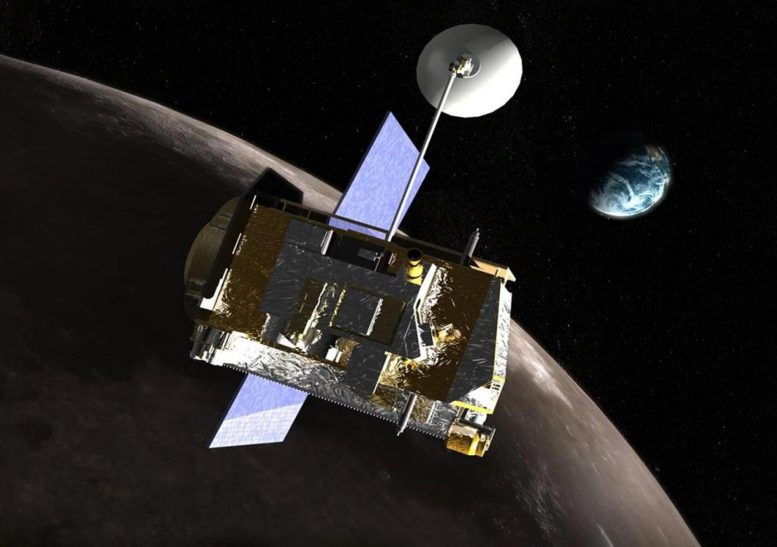
The presence of conduits below the lunar surface has been theorized and extensively debated for at least 50 years. The analysis of NASA Lunar Reconnaissance Orbiter radar data reveals what lies below the Mare Tranquillitatis.
A team of international scientists, under the lead of the University of Trento, Italy, has published a research study that has made a milestone discovery about the Moon.
For the first time, scientists have demonstrated the existence of a tunnel in the lunar subsurface. It seems to be an empty lava tube. The research study was published today (July 15) in the journal Nature Astronomy and is the result of an international collaboration.
Evidence of Lunar Caves
“These caves have been theorized for over 50 years, but it is the first time ever that we have demonstrated their existence,” explains Lorenzo Bruzzone, professor at the University of Trento.
How was this demonstration achieved? Bruzzone explains: “In 2010, as part of the ongoing LRO NASA mission, the Miniature Radio-Frequency (Mini-RF) instrument acquired data that included a pit in Mare Tranquilitatis. Years later we have reanalyzed these data with complex signal processing techniques we have recently developed, and have discovered radar reflections from the area of the pit that are best explained by an underground cave conduit. This discovery provides the first direct evidence of an accessible lava tube under the surface of the Moon.”

Techniques and Technology in Lunar Research
“Thanks to the analysis of the data we were able to create a model of a portion of the conduit,” continues Leonardo Carrer, a researcher at the University of Trento. “The most likely explanation for our observations is an empty lava tube.”
The Mini-RF principal investigator, Wes Patterson, from the Johns Hopkins Applied Physics Laboratory adds “This research demonstrates both how radar data of the Moon can be used in novel ways to address fundamental questions for science and exploration and how crucial it is to continue collecting remotely sensed data of the Moon. This includes the current LRO mission and, hopefully, future orbiter missions.”
Implications for Lunar Exploration
The study, partially funded by the Italian Space Agency, also involved researchers of the University of Padua and La Venta Geographic Explorations APS who contributed to the geological analyses and the modeling of the identified conduit.
The study has scientific importance and implications for the development of missions to the Moon, where the environment is hostile to human life. Surface temperatures on the illuminated side of the Moon can reach 127°C (261°F), while temperatures on the unilluminated side can drop to -173°C (-279°F). Cosmic and solar radiation can be as much as 150 times more powerful on the lunar surface than we experience on Earth and there is a constant threat of meteorite impact.
These conditions drive a need to find safe sites for the construction of infrastructure that can support sustained exploration. Caves such as this one offer a solution to that problem.
Reference: “Radar evidence of an accessible cave conduit on the Moon below the Mare Tranquillitatis pit” by Leonardo Carrer, Riccardo Pozzobon, Francesco Sauro, Davide Castelletti, Gerald Wesley Patterson and Lorenzo Bruzzone, 15 July 2024, Nature Astronomy.
DOI: 10.1038/s41550-024-02302-y
15 Comments
Bet they find Charlie in the cave.
Dream Machine!
Gee, always a cgi or artist picture of the moon or space! It’s because there is no moon, it’s a holographic image. And they claim to have telescopes that can see the surface but they always show us cgi or artist concepts. Also they can’t show us a telescopes camera image of the old space mission crap up there. Why? Because there’s nothing there because it’s a holographic moon.
Holographic moon?
Explain the tides then.
Tides come in, Tides go out…can’t explain that.
If we have caverns, I’m not all that astonished that any other large terrestrial planet would have them.
I should call her
Underrated comment
We should have had a base there 20 years ago. Doug? Your an idiot.
No, no, no, NO! Back tf out, we don’t wanna disturb the caves, anyone who has played destiny knows that Caves on the moon are never good news!
I was gonna say “it’s the hellmouth” but this will suffice.
Why China is more advance in space exploration? China has a new modern and spacious space station to do research in space.
So many great stories from NASA through its LRO satellite camera.
I’m _”dying only wanted”_ to know is why the LRO camera can’t make a _”NEW PHOTOS of the corpses”_ from the Apollo moon landing 50 years ago??? *Not even a single one _”fine sharp”_ photos of the corpses from the Apollo moon landing???*
*How come the LRO’s cameras are _”less sharp”_ than _”Google Street view”_ cameras???*
It is said that on the longest day of the thousandth year, the stars will aid in her escape. With her return, she will bring about eternal night.
I’lld really love to visit the moon. ND check what the caves are all about